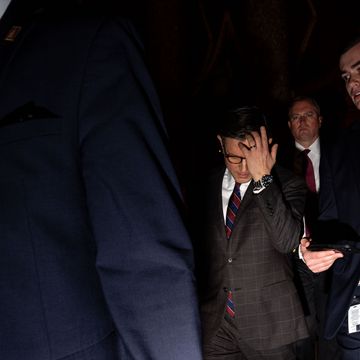Do Eskimos really kiss by rubbing their noses together?
Before we get to the smooching, AF must point out that the word Eskimo -- derived from the French by way of the Ojibwa term for "eaters of raw flesh" -- covers a vast swath of tundra inhabited by various native tribes, many of whom regard Eskimo as an archaic and demeaning term and would happily plant a harpoon in your blubbery, ignorant ass for using it. Inuit ("people") is what you meant to say.
The traditional Canadian Inuit kunik, or "kiss," does indeed involve the schnozz, although, notes Taqralik Partridge, communications director of the Avataq Cultural Institute in Montreal, "Inuit do not touch noses end to end or rub them back and forth against each other. We place our nose over the place we intend to kunik, press our nostrils against the skin, and breathe in, causing the loved one's skin or hair or any other part to be suctioned against our nose and upper lip."
John Chase, who calls himself a "Yupik Eskimo from southwest Alaska," describes a similar practice among his folk: "We generally show our affection for one another not by rubbing but by smelling the person on their cheek."
No variant of the Inuit language, by the way, includes a word for "ass kisser" -- they simply point to a photograph of Larry King.
Why does the hair on my head keep growing while the hair on my arms stops growing? But if I cut my arm hair, it grows back to its original length. How does it know I cut it?
Slowly put down the scissors, Einstein, and give a listen to Dr. Paul Cotterill, president of the International Society of Hair Restoration Surgery: "Different areas of the body have different hair-growth rates and cycles. That genetic information is stored at the base of the hair shaft in the root of each hair follicle. The hair on a typical scalp will grow about one centimeter per month for two to six years and then fall out. Hair on other parts of the body, such as the arm, may grow at a rate of one third a millimeter per day but for a shorter growth cycle of only three to six months before it's shed and then a new hair starts to grow. That is why if you cut the hair on your arm, it will always grow back to its preprogrammed length."
Your next mission: How does your thermos know whether to keep liquids hot or cold?
Spike Lee, Stan Lee, Bruce Lee, Robert E. Lee: How does a single last name cross so many ethnic boundaries?
Not to mention major league baseball players Carlos Lee and Manny Lee, from Panama and the Dominican Republic, respectivelee.
What we have here is a rare cosmic linguistic coincidence: Lee, and versions thereof, is a common surname in many places on the world map for different, often complex, reasons. In China, where Li is the most common surname, the name is derived from two written characters entwined by legend -- one meaning "minister," the other "plum" -- and one state, whose rulers' descendants adopted the name.
The Anglo surname Lee was adopted first as a place name. "We find it in England going back to the Middle Ages," says Patrick Hanks, editor of the Dictionary of American Family Names. "It's a name for someone who lived near a meadow or a bit of arable land -- for which the Middle English word was lee or lea. From the Old English word, which originally meant 'wood,' it came to mean a clearing in the wood. A lot of surnames come from where somebody lived."
How Lee became an African-American surname is guesswork. It is "not a particularly common surname in the African-American community," says Edward Callery, editor emeritus of the journal of the American Name Society. Hanks suggests that an Irish or Scottish slave owner may have passed on his name to his slaves.
Interestingli, Bruce Lee was born Li Jun Fan and Americanized the spelling of his name, while Stan Lee of Marvel Comics fame once was Stanley Lieber. And as every Civil War buff knows, Robert E. Lee's real name was Reuben Lebovitz.
Whatever happened to the flag on the moon?
Six flags, mister, one at each lunar landing site, and Jack Kinzler, the NASA engineer who designed 'em, says they're still standing tall: "We painted red bands around the aluminum flagpoles and told them, Pound it down until the red line that's painted on there reaches the bottom of the soil -- and that's the way we determined how to safely put it in so it wouldn't fall over."
Interestinglea, this is also the process that AF employs to maintain his erections.
Got a question? Send it to Answer Fella via esquire.com/talk.













